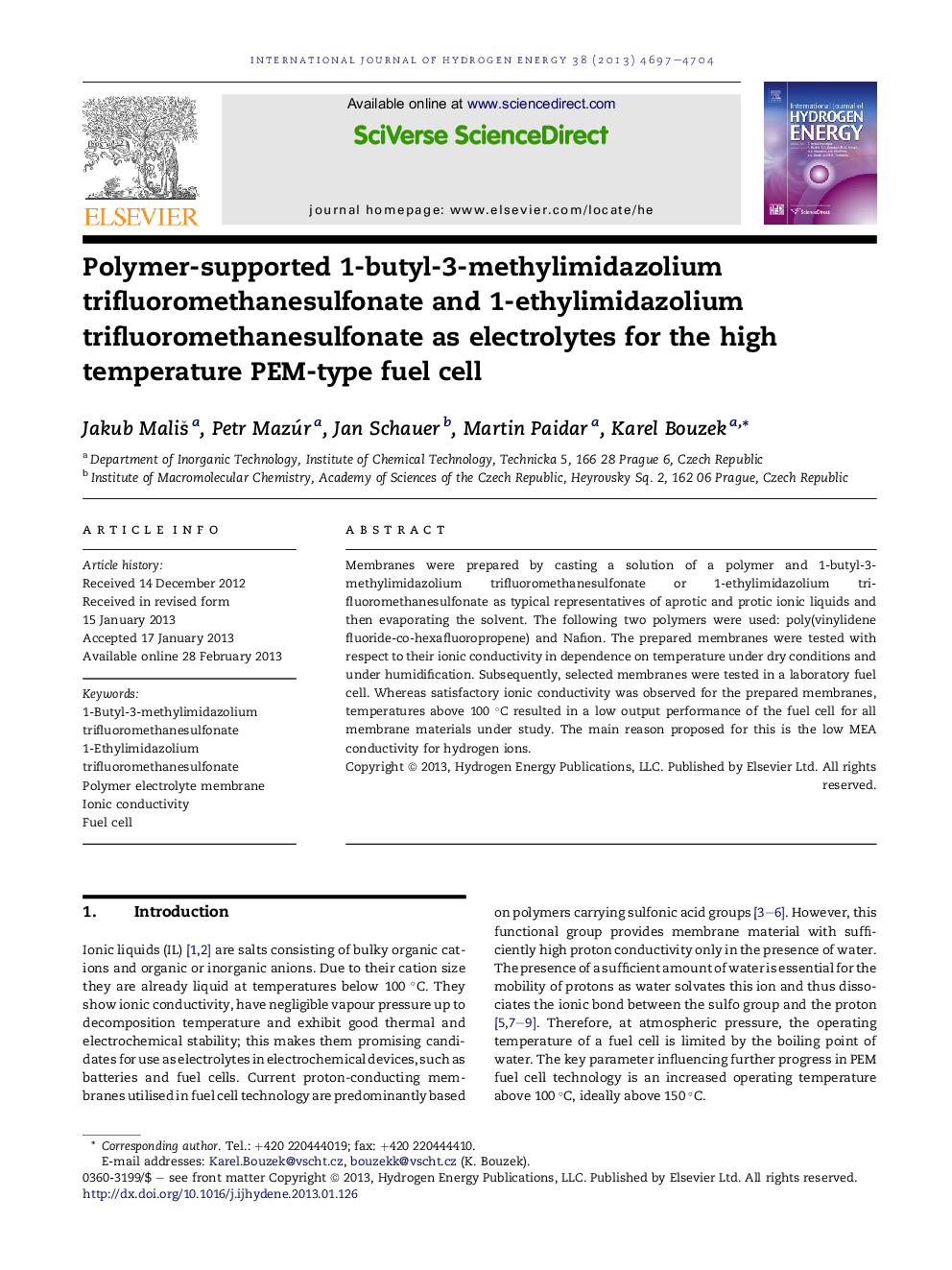| Article ID | Journal | Published Year | Pages | File Type |
|---|---|---|---|---|
| 1278163 | International Journal of Hydrogen Energy | 2013 | 8 Pages |
Membranes were prepared by casting a solution of a polymer and 1-butyl-3-methylimidazolium trifluoromethanesulfonate or 1-ethylimidazolium trifluoromethanesulfonate as typical representatives of aprotic and protic ionic liquids and then evaporating the solvent. The following two polymers were used: poly(vinylidene fluoride-co-hexafluoropropene) and Nafion. The prepared membranes were tested with respect to their ionic conductivity in dependence on temperature under dry conditions and under humidification. Subsequently, selected membranes were tested in a laboratory fuel cell. Whereas satisfactory ionic conductivity was observed for the prepared membranes, temperatures above 100 °C resulted in a low output performance of the fuel cell for all membrane materials under study. The main reason proposed for this is the low MEA conductivity for hydrogen ions.
► Polymer-supported ionic liquids tested in the HT PEM fuel cell. ► Impact of the polymer support and ionic liquid compatibility on the properties of resulting materials verified. ► Functionalised vs. non-functionalised polymers used as a support. ► Very low fuel cell performance observed when compared with the traditional phosphoric acid doped PBI type membrane.
